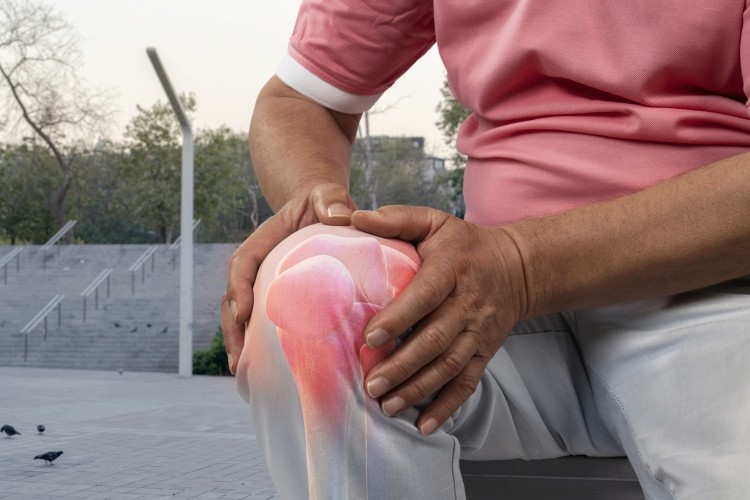Study supports urolithin A's potential for mitochondrial function & joint health

Scientists from Switzerland-based Amazentis SA and Scripps Research in La Jolla, CA analysed human chondrocytes (HC) from a healthy donor for mitochondrial function and mitophagy activity following administration with UA, as well as in vivo cartilage degradation in mice with OA.
They discovered UA taken in doses of 6.25 micromoles and 12 micromoles significantly increased mitochondrial basal and maximal respiration, and adenosine triphosphate (ATP)-linked respiration at the lower dose, leading to improved mitochondrial metabolism, while in vivo tests revealed significant reductions in cartilage degradation eight weeks after treatment.
UA administration also led to a trend towards decreased pain response, from four weeks after treatment, compared to the control, and nociception significantly reduced after eight weeks.
“These data suggest UA can reduce OA-associated pain and that higher doses or longer treatments could enhance UA's pain relief activity,” the authors commented.
The ingredient
Urolithin A is a compound generated by gut microflora from ellagitannins found in food such as pomegranate. The compounds are hydrolysed in the stomach into ellagic acid, which is subsequently converted by the gut microflora into urolithin A. However, not everyone has the right microflora to be able to make the metabolite.
As reported previously by NutraIngredients-USA, Amazentis has developed a method to deliver finely calibrated doses of urolithin A. Preliminary data published in Nature Medicine indicated that urolithin A may improve mitochondrial function by stimulating mitophagy, a process by which damaged mitochondria are recycled to permit a renewal with healthy mitochondria.
These potent beneficial effects were observed in different organisms, including C. elegans, mammalian cells, rodents, and several human clinical trials.
The new study was funded by Amazentis.
Mitophagy mechanism
Mitochondrial dysfunction is a common feature of joints affected by OA, therefore targeting mitophagy is a relevant strategy to define therapeutic treatment for OA, the authors argued. The process ensures the removal of dysfunctional mitochondria, accumulated by chondrocytes from diseased joints that inhibit mitochondrial biogenesis.
Chondrocytes are responsible for the function, integrity, and homeostasis of articular tissue and are the only cell type in mature cartilage. However, they have an extremely low rate of proliferation and are inclined to accumulate damage, the authors explained.
“This causes the progressive decline in their proliferative and synthetic capacity, thereby increasing the risk of OA with aging.”
Interventions designed to alleviate impaired mitophagy in age-related disease have had promising results for conditions such as muscle again and neurogenerative disorders, but no pharmacological approach has examined methods for mitophagy recovery in preclinical models of OA, they added.
“Thus far there are no drugs that have been successfully tested in clinical trials for simultaneous symptom and disease modification in OA. This suggests that new therapeutic targets and agents are needed.”
Study findings
Researchers noted that UA increased mitophagy flux and activated the PINK1-Parkin Mitophagy pathway in both healthy and OA cell types. This suggests mitophagy activation is associated with better mitochondrial respiration that is key to efficient cellular function.
A mild anti-inflammatory action of UA was also observed, making it the “only compound tested in preclinical models of OA with the potential to both reduce inflammation and improve mitochondrial health,” they said.
Observed reductions in pain associated with UA intake may contribute to the compound’s beneficial effects on mobility, the authors stated.
“UA benefits on pain can be related to the reduced structural damage in the joint tissues or may be a consequence of reduced joint inflammation, a major driver of OA pain.”
They suggested this could have repercussions for other debilitating conditions, such as cervical spine pain and musculoskeletal injuries, and should be explored in follow-up studies.
Conclusion
No direct conclusions can be drawn about mitochondrial changes specifically in sensory neurons associated with pain, the authors said, and mechanisms responsible for effects of UA on pain remain to be determined.
In addition, the study cannot rule out a broader systemic impact of UA that might contribute to chondroprotection.
However, they added: “Muscles and joints are key tissues to support our mobility. Therefore, the combined effect of UA on both joint and muscle mitochondrial health strengthen the translational relevance of this compound to ameliorate OA-associated disability and support overall mobility.
“This evidence, and the lack of effective drugs to target OA, calls for future studies to investigate the impact of UA on OA in clinical settings.”
Source: Aging Cell
Published online, June 7, 2022: https://doi.org/10.1111/acel.13662
‘Urolithin A improves mitochondrial health, reduces cartilage degeneration, and alleviates pain in osteoarthritis’
Authors: D. D'Amico, et al.









